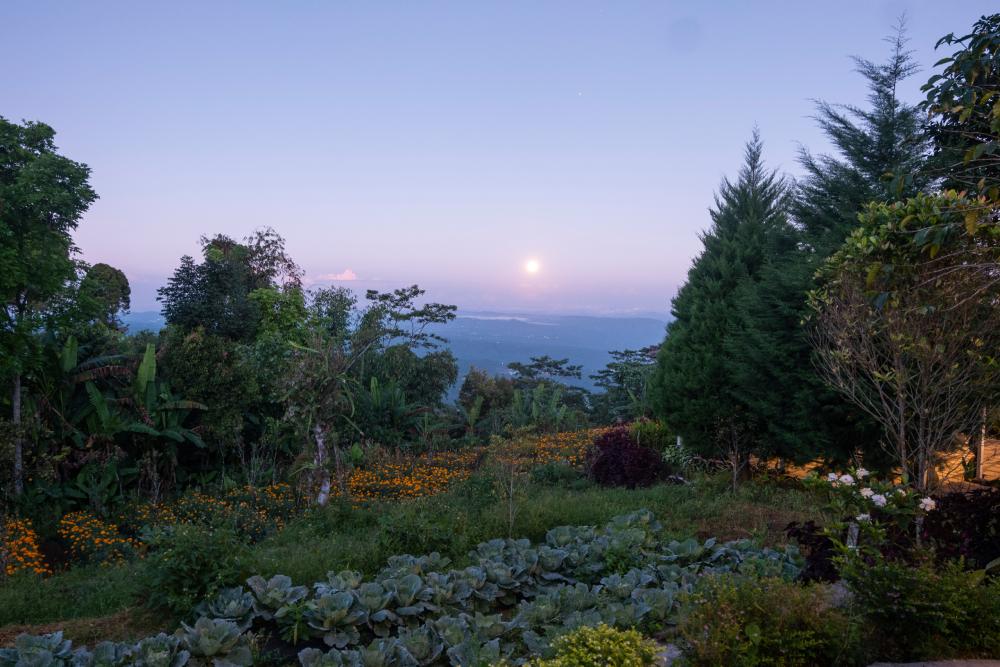
Mountain roads balance between the ridges that ascend into Bali’s central highlands, either hugged by sheer, fern-covered cliffs or opening to vast views of lowland scenes, objects shrinking with the distance: a thousand metres above sea level. These are the roads to Munduk, an alpine pocket where dewy rainforests and hidden waterfalls invite outdoor-types to explore the rural hillsides of Bali.
For many, Munduk Village was once just a thoroughfare for those heading to the north coast. A necessary, albeit scenic, route that marked the peak of one’s ascent up the central Bali spine, before descending the winding roads that scale down the northern face —with spectacular views, it should be said. Munduk is found directly after the better-known Bedugul area and is often mistaken as being part of it. In fact, it is quite separate, marking the beginning of Bali’s northern regency of Buleleng. What’s more, it has also become a destination in its own right.
The Sacred Lakes of Munduk
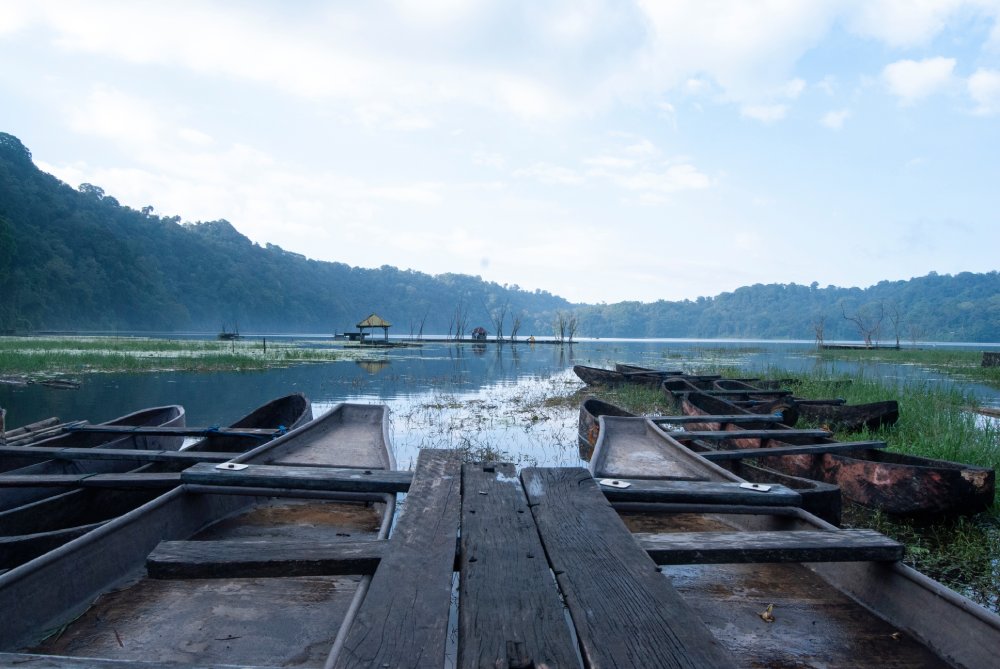
Most famously, Munduk is home to Tamblingan Lake, one of the ‘twin lakes’ alongside Buyan Lake. The twin lakes were once one majestic body of water, cosying around the foot of Mt.Lesung, before a landslide separated them into the two distinct lakes they are now. In fact, all the mountain lakes, including Beratan, are found in a giant caldera — created by an ancient cataclysmic eruption. The eruption left behind a legacy of dormant volcanoes, lakes and fertile soils out of which the mountainside has flourished into a deep, dense forest.
These mountain lakes, have always been considered sacred: the realm of Dewi Danu, goddess of the lake. Even in Bali’s ancient past, the people understood that these lakes were the island’s reservoirs, feeding the rivers and aquifers, and thus providing fertility and prosperity across the lands. As a society that followed a ‘religion of water’, or agama tirta, these lakes were deemed sacrosanct.
It was recorded in history, on ancient prasasti (copper inscriptions) a community of Bhujangga Waisnawa (Wisnu worshippers) were assigned to maintain the sanctity of these lakes as far back as the 9th century. Many of the kings that followed continued to enforce this community’s commitment through the centuries.
Tamblingan Lake is the smallest of the three lakes, but easily the most serene: the surrounding banks are steep and thick with trees, seeming to rise straight out of the eerily still waters, caught in this natural basin. This serenity was clearly not lost on ancient residents of Tamblingan. Its very name attests to this: tamba, meaning medicine, and elingang, meaning spiritual strength. This is owed to a story written in a lontar (Lontar Kutara Kanda Dewa Purana Bangsul).
It stated that the village had been struck with some kind of disease epidemic, and one devout man went to fetch water from the lake. Thanks to his spirituality and worship, the water was able to heal all those who had been sick. Mysteriously, the community of one village split into four villages (Munduk, Gobleg, Gesing and Umajero), named thereafter as Catur Desa (four villages). Together, the four villages continue to guard the spirituality of Tamblingan.

There are a total of 11 sites of worship scattered around the lake. The most prominent is Pura Gobleg found on the southern shore, a stunning water temple that sits on the shallow shores, which dramatically gets engulfed in water when the rains come in and the lake water rises. This is the largest of the temples around the lake. Across the waters, one will find Pura Ulun Danu Tamblingan, a humble temple engulfed by the surrounding vegetation. The ancient meru shrines themselves have been overtaken, with ferns and moss growing out of their ijuk roofs.
On the eastern shore, accessed by the simple traditional boats carved out of trees, stand more temples, including Pura Dalem Tamblingan; Pura Pande Tamblingan, visited by the smith clans (pande) of Bali; as well as two pre-Hindu worshipping grounds, Pura Embang and Pura Serangan, where holy giant holy stones are venerated — harkening back to Bali’s animist past.
A scenic road takes travellers on the ancient caldera rim that travels the length of both Buyan and Tamblingan, creating a superb perch from which to enjoy the vistas across these two sacred lakes.
Waterfalls and Wilderness
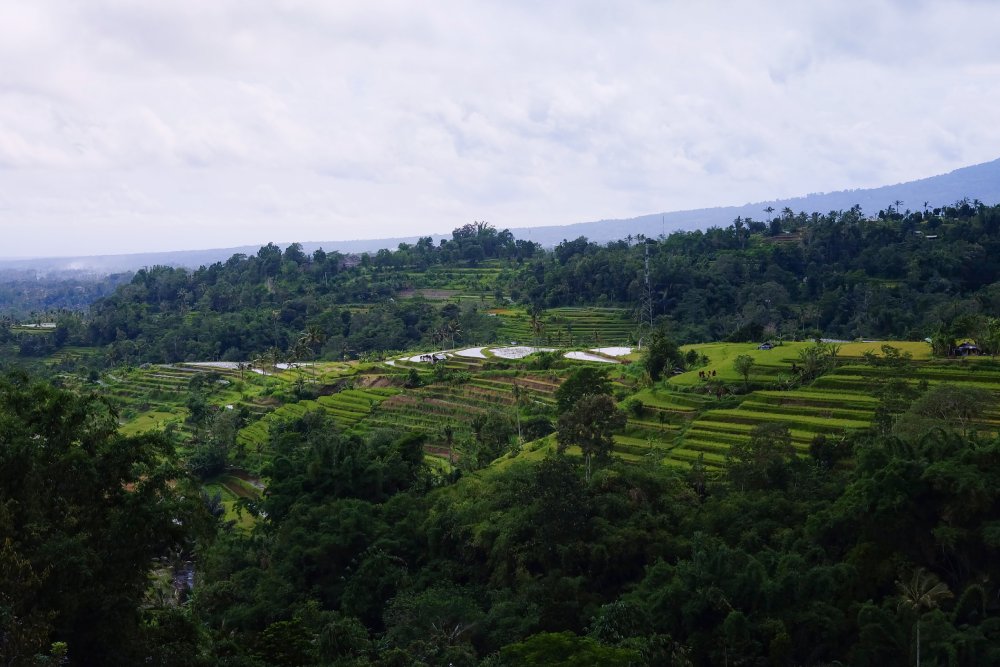
Other than Tamblingan Lake, Munduk is known for its density of waterfalls. Along the ridge road that runs parallel to the twin lakes, multiple smaller village roads invite travellers to sojourn into the surrounding forests in search for waterfalls.
Popular destinations include Banyumala and Banyu Wana Amertha, the latter offering a choice of up to four waterfalls in one area that one can explore. Forest paths will take you deep into the mountain ravines, whose towering cliff walls are thick with tropical ferns and creepers, giving the area an almost Jurassic-like experience. A short trek through the bush will be rewarded by a cool dips in the pools of these falling rivers.
Offering a slightly different atmosphere is Melanting Waterfall. Found on the mountain roads descending to the north coast, the journey to this natural wonder offers a more expansive experience of the Munduk environment. For one, the longer walking path treads gently across the rolling foothills, traversing around the depths of the ravines, with views across Bali’s northern landscape. The open walkways brings you past locals selling exotic locally-grown produce, bounty of the fertile Munduk hillsides, left to dry under the hot sun. Vanilla pods, cacao seeds, cloves, nutmeg and candlenut, sticks of cinnamon and even lumps of wild ‘kopi luwak’, i.e. coffee beans excreted by the civet cat (luwak). These are put out on display for passersby to touch and smell, and hopefully purchase as a souvenir of their time in the verdant highlands.
In recent years, Munduk has become quite a productive coffee growing area as well. Much like Bali’s well-known coffee-growing region of Kintamani, Munduk is blessed with much of the same ingredients: cool climates and volcanic soils bursting with nutrients. It just happens that these are great conditions for the more treasured arabica beans, which require lower growing temperatures than its robusta counterpart.
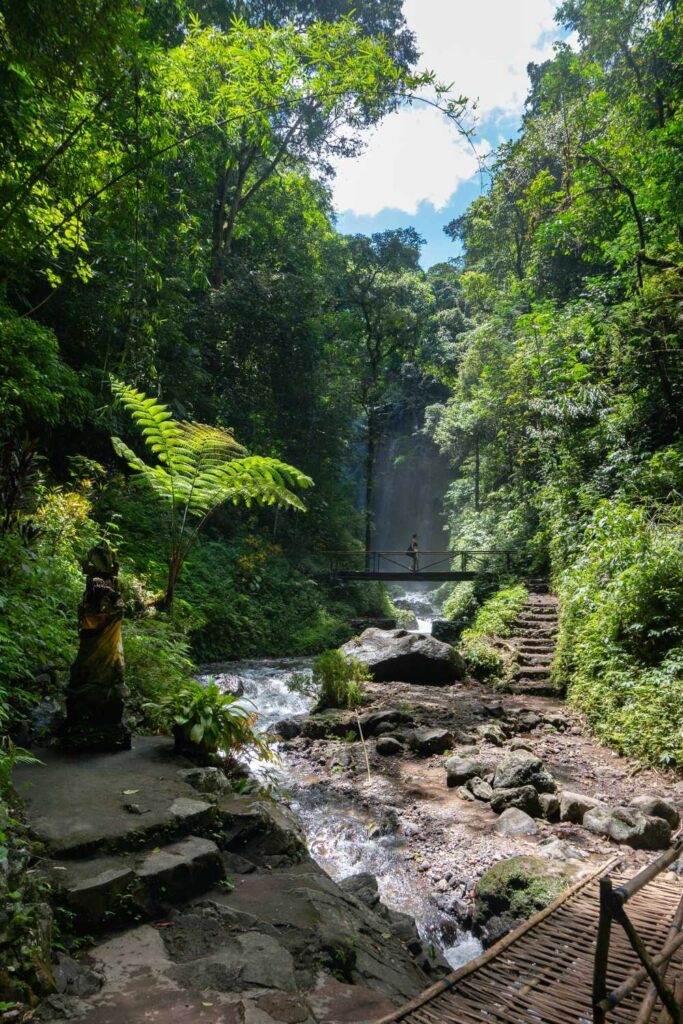
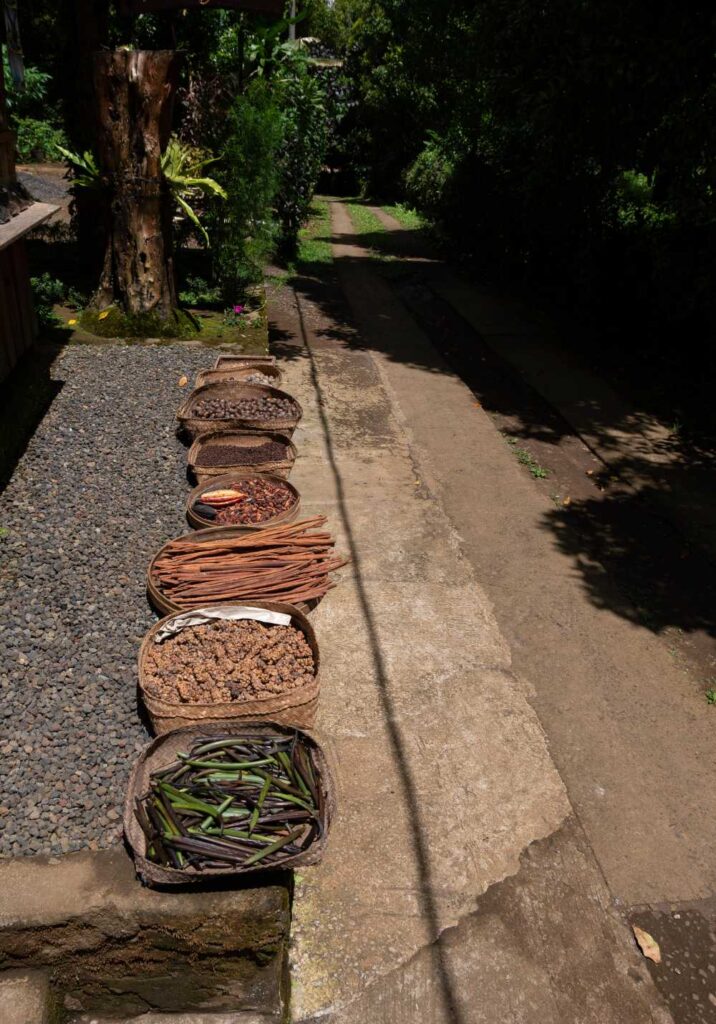
Back on the road to Melanting Waterfall, the local residents have done well to keep the area clean and litter-free, clearly implementing a relatively strict protocol on waste management that has paid off. It remains pristine, and the paved walkways manicured and welcoming for the average trekker.
The waterfall itself is a powerful force, churning out a foaming gush of waters from 30m high into the relatively small plunge pool below, which trickles off into a contrasting peaceful stream that visitors can comfortably scramble up. Its impressive height has created a deep ravine, a peaceful enclave embellished by the streaks of sunlight that pierce between the tangling canopy above head, glistening in the atmospheric spray of Melanting’s frothing rapids. The water in the stream is crystal clear, making for a refreshing dip for those willing to brave the chill of a fresh mountain river!
Munduk’s real charm is its northern facing side, which presents perhaps one of the most jaw-dropping views of Bali’s north coast. Where much of Munduk’s ‘plateau’ is insular — encapsulated within caldera walls, shrouded by forest — the steep hillsides that cascade down towards the sea are open, liberating and even humbling. Between the ridges that carve their way up the mountain are gentler plains, where farms and rice terraces are sculpted into the landscape, adding variety to the texture and colour of the landscape. The Munduk Rice Terraces and Dayang Rice Terraces are testament to this.
What really distinguishes this area from much of Bali is Munduk by night. A sharp chill seems to descend from the sky, bringing with it the mist of clouds that blankets the roads and hillsides — the theatre curtains closing on the day. It’s not uncommon for bonfires and yes, even fireplaces, to be lit, creating a welcoming hearth around which friends can gather. A very different experience on the island of the gods, up in the central highlands of Bali.







